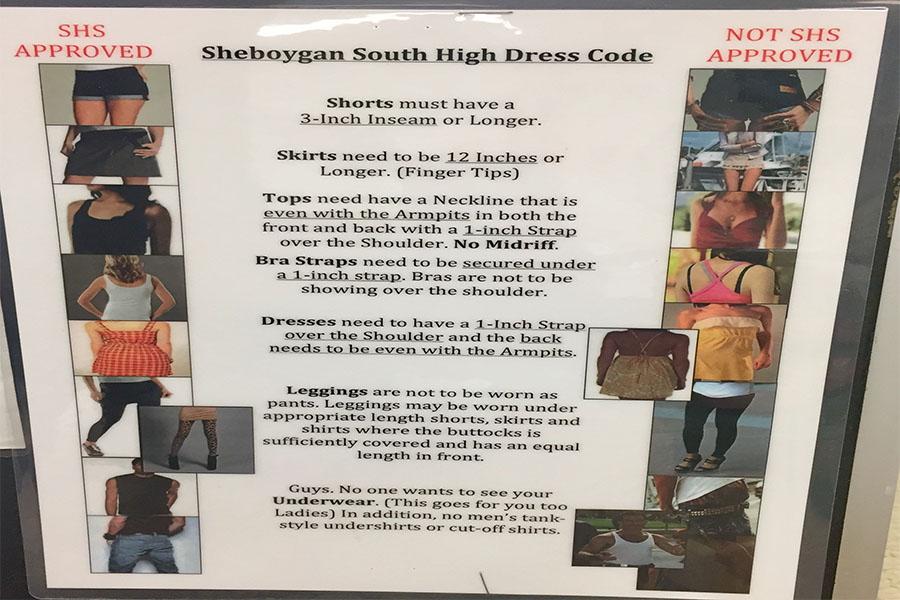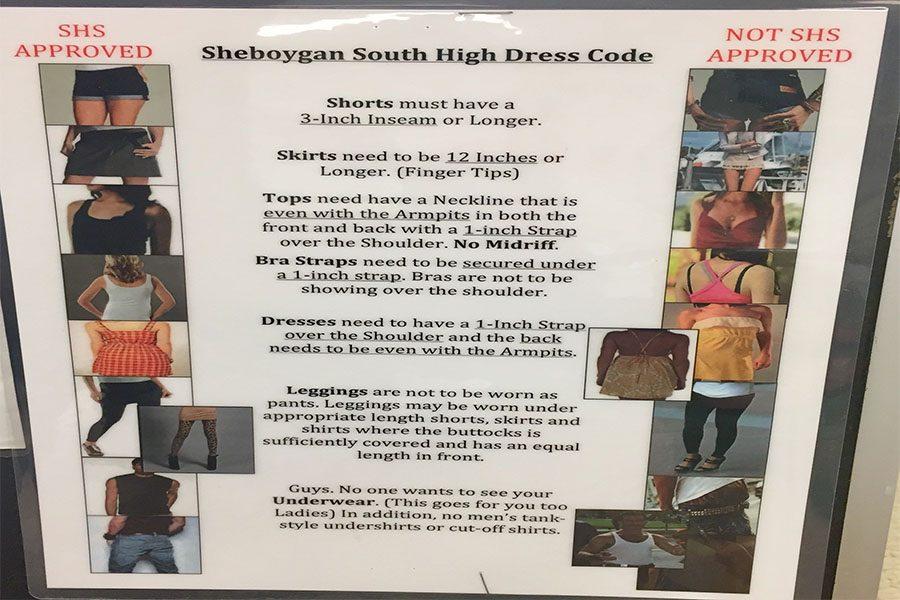Dress Code: Approved V. Not Approved
Approved V. Not Approved: The pictures representing the dress code need a little updating due to fashion being a never ending cycle.
November 7, 2016
Dress codes are said to be put in place to reduce distractions within the learning community, but does having a dress code really affect students in a classroom? In a poll taken at South High School, 84.5% of the 194 students to take the survey answered with a ‘no’. They do not feel the dress has any affect on students learning. That means over half of students to answer the survey believe they can learn regardless of what the person in front of them is wearing (or not wearing).
The biggest issue regarding the dress code is young women feeling targeted. As the dress code brings attention to their bodies, being seen as an object. A male would never get yelled at for having too short of shorts or an inch of his stomach showing. Senior Caitlyn Cobb expressed her feelings,
“I think the dress code is very strict, and way too much. If you ask any boy, girls showing their bra straps is not distracting. Society forces us to wear [bras], so is it a big deal if our straps show? They’re [also] claiming that showing our backs is distracting and it’s completely contradictory to what we really think.”
The topic of bras being required isn’t specifically in the dress code, but girls still feel obligated to wear them and it is a very taboo topic in itself.
When asked about how the dress code affects Freshman Owen Case, he shares his insight; his answer was quite simple.
“The dress code doesn’t affect me. It is way more strict on the girls at school.”
Most students view the dress code as a way to avoid classroom distractions; mainly focusing on the male attention a girl may receive due to the outfit she wore to school. They feel it is degrading and/or sexist, this is where the controversy falls.

Others seem to have a different view, they see the dress code as a positive thing. The minority of people answered with a ‘yes’, a slim 15.5%, in regards to how a non-enforced dress code would surely stir up some distractions.
Junior Serenity Ubelhor sees an enforced dress code as a positive thing. She mentions that is put in place to help us all learn and minimize interruption. Ubelhor also related the dress code to our future careers. In an office building, you can’t show up wearing shorts and a crop top.
A teacher has a duty to regulate the rules put in place by the school’s administration. English teacher Mr. Richard Mathews, as a male staff member, feels enforcing the dress code makes for an awkward environment.
“Dress codes have a purpose. They give teachers the ability to control the climate in their own classroom but creating an environment where everyone feels comfortable.”
Mathews and Ubelhor reflect off of one another, as do Cobb and Case. So which side is correct?
There is certainly no way to tell for sure if dress code is in place for the right reasons, but the Dean of Students Mr. Josh Kestell brings light to the topic. He brings up similar reasons as Ubelhor did above.
“School is a semi-formal environment. There is an expectation on appearance and our main focus is learning.”
After talking with Kestell, he put the school’s reasoning into perspective The school administration wants students to express themselves and be comfortable in their own skin… within reason.

